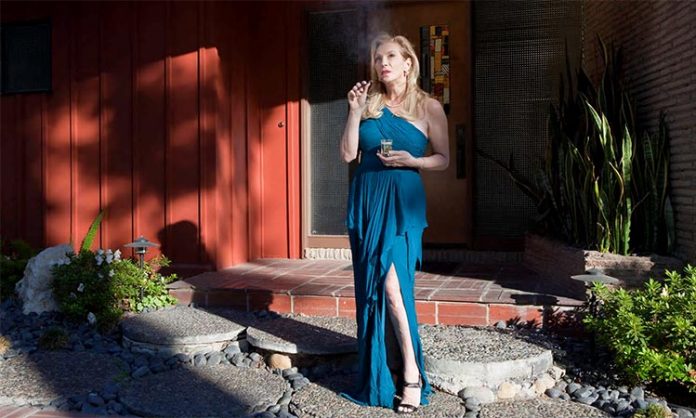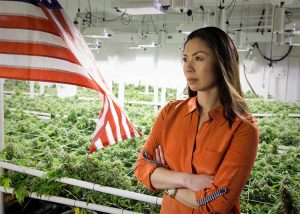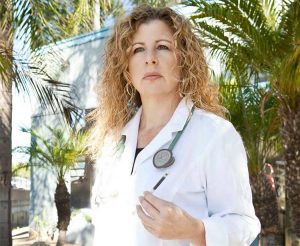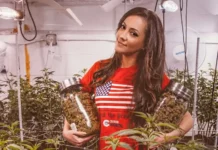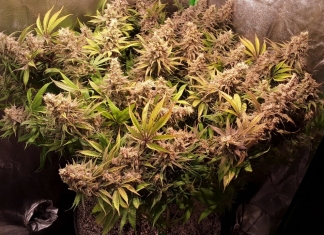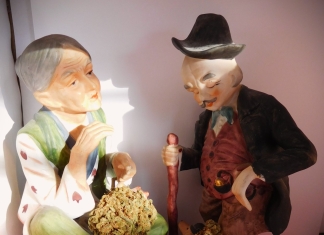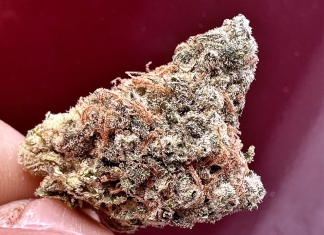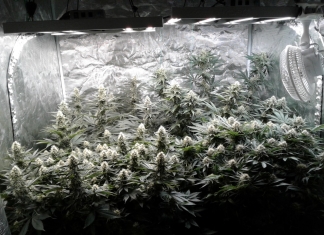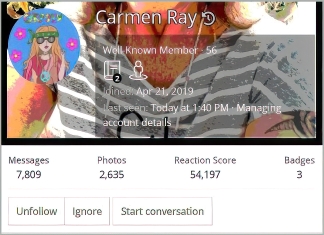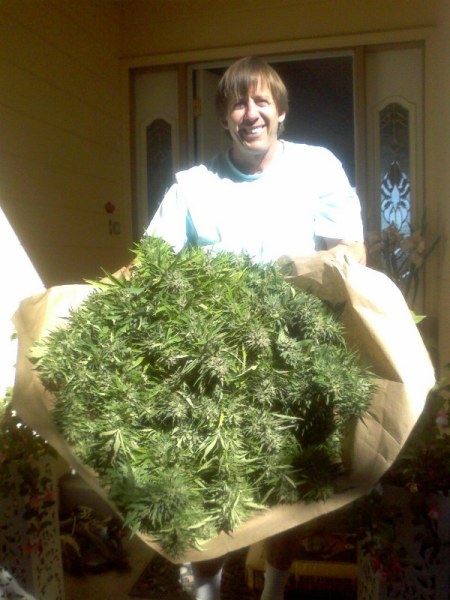Like most other American industries, marijuana has traditionally been dominated by men. Overwhelmingly they grew it, they dealt it and they smoked it. Hopes that the legal marijuana industry would be more egalitarian than others have largely deflated. According to a 2017 survey, women hold 27% of executive positions in cannabis, only slightly more than in the country at large. Nevertheless, the plant’s status as a quasi-legal drug has created an opportunity for women to forge groundbreaking careers.
Cannabis businesses are obsessed with tearing down the stigma that continues to dog the plant. Many of the most ambitious companies want to make inroads with affluent adults and parents who don’t use, or no longer use, cannabis; if the prevailing stereotype is that weed is a drug used by low-achieving men, the thinking is that women will be better at getting their husbands and boyfriends to use pot.
Thirty US states have legalized medical marijuana and it is among the country’s fastest-growing industries. Sales rose 33% last year, topping $10bn, even though only a few states, including California, Colorado, Nevada and Oregon, have robust industries, and product can’t be transported across state lines. But compared with other lucrative industries, such as tech, it is far more open to people who lack highly specialized education and have lived unconventional lives.
There is immense interest in marijuana’s potential as a medicine, but in most cases the evidence is more anecdotal than confirmed by mainstream science. It’s far easier for a pot business to enter the more nebulous “wellness” category. Today, in every dispensary in the US, there are cannabis products packaged like high-end personal care products; and even pharmaceuticals, designed to convince women it’s OK to try cannabis.
Female entrepreneurs believe legalization will bring immense medical and social benefits. The five women who share their story here – all photographed by Pietro Chelli in recent years – are a doctor, a mother of a young child with cancer, and three very different entrepreneurs. Each in her own way is cutting through the stigma.
Cheryl Shuman, 57, Beverly Hills Cannabis Club, Los Angeles, California
I first tried cannabis in 1996, after I was sexually assaulted. Doctors had put me on anti-anxietals and antidepressants and they turned me into a zombie. I had got to the point where I didn’t want to get out of bed. Eventually, my therapist said to me: “Cheryl, with all due respect, you just have to smoke a joint.” Only in LA, right? Until then I’d been a good girl.” I’ve still never had a beer, never had a cigarette.
My therapist had his plants in his back yard and kept his stash in mason jars. He rolled a joint. I was impressed he could roll it with only one hand. I took the first puff and almost coughed my lungs up. By the second puff, I said: “You know what, this is really great.” I felt instantly better.
Instead of taking pills, I would just roll a joint every day. I told my kids, as I didn’t want to lie to them. It was an entry to an underground society of professional, smart, dynamic, educated people, who use this for wellness. Who knew?
Today I’m a pot evangelist. I’ve spoken all over the world – Australia, New Zealand, Canada and Mexico. Last year, I was only home in Beverly Hills for 16 days, and those were for events. My business now is basically being a matchmaker, pairing investors with exciting opportunities, ranging from biotech companies to branding, to a music festival. It’s like being a real-estate broker – I make things happen: “What do you need?”
Back when I first got involved in cannabis it was largely used by gay men to deal with the nausea and wasting of Aids. Ultimately, cannabis was legalized because of love for them. Many in the cannabis community have also had an experience similar to coming out of the closet – the grass closet. Now we can hold our heads up high and lead an authentic life.
Tracy Ryan, 42, CannaKids, Los Angeles, California
I got into this four and a half years ago, when my daughter Sophie was diagnosed with a rare brain tumor. She was eight and a half months old. The doctors told us Sophie’s only chance to survive was a 13-month course of chemotherapy. Confronting this extremely difficult situation, my husband and I began to research ways to save our daughter. We decided that cannabis treatment was something we wanted to do alongside chemotherapy.
Sophie took her first dose of cannabis at nine months. It was on camera for a documentary, Weed the People, which premieres at the SXSW festival in Texas this March. Over the first 13 months, a tumor that wasn’t supposed to shrink shrank by 95%. Thanks to the shrinkage, much of Sophie’s vision has been saved.
My husband and I knew this wasn’t a secret we could keep to ourselves. Today, our company CannaKids has provided medical-grade cannabis to more than 2,000 children and adults in California. We don’t look like what people imagine stoners to be. We love our kid and take care of her, and people listen to us.
We’ve also partnered with Cure Pharmaceutical to fund cannabis and cancer research at the Technion Institute in Israel. We still don’t know the right formula of cannabis and chemotherapy to address cancer. But research we support in mice has eliminated one type of pediatric cancer with cannabis alone. We hope to finalize the human tissue phase soon, then advance to human trials.
Since she was first diagnosed, Sophie has had several recurrences of her cancer. She has taken concentrated cannabis oil for four and a half years now. When her doctors at Children’s Hospital Los Angeles put her on an experimental drug that required her to stop additional supplements and medications, they advised that she continue taking cannabis.
She still receives chemotherapy, once every two weeks. She never fully lost her hair, but now has a full head of it. She’s in the 81st percentile for height and weight, and is in kindergarten with healthy kids her age. She has her own business cards and is a networker, like her mother.
Forget about the word “weed”, forget “marijuana”: these children are taking medical cannabis. We don’t want kids stoned. We want them happy, healthy and ready to go to school.
Kristi Lee Kelly, 40, Marijuana Industry Group, Denver, Colorado
In 2009, I left Maryland and a career in advertising and marketing to join Colorado’s cannabis industry. I thought it would be a way to participate in something early on that would really make a difference in people’s lives.
It’s been so long since then. Someone a long time ago likened cannabis to dog years – a year in cannabis is like seven years doing anything else. At first, investment options were extremely limited, and politicians were unwilling to address the issue. I’ve had 23 bank accounts closed.
I started as an owner, operator and investor in a vertically integrated group of medical cannabis businesses. This meant we grew the plants, manufactured them into vaping oil and other products and sold them at our dispensaries. Eventually we accomplished what we set out to do, and I sold my shares in the company. I have since turned to helping others actualize their cannabis aspirations.
When we started, patients’ rights were not clear. Could you have a card, consume cannabis and work? How did a doctor’s recommendation interact with the other aspects of your life? Now we have thousands of patient stories. The growing body of scientific and state data has demonstrated that this plant isn’t causing the harm that some people said it would.
When we look at how this plant has come and gone over centuries, this is a 3,000-year-old journey, not one that is necessarily sensitive from one administration to the next. The long-term contribution this plant can make to humankind has been documented.
In cannabis, I’ve worked with aspiring business owners, policymakers and investors. I’m also working with a hemp technology company. In the gold rush, some of the most successful people were the ones who sold picks and shovels to prospectors. Part of what I’m doing is figuring out what the picks and shovels are.
Colorado is the most mature policy environment in the world. We tend to confront business challenges first; we continue to expand the conversation around cannabis; we’re looking at the social impact. Last year, the Marijuana Industry Group forged an agreement with the state Department of Transportation and Lyft [a ride-share company] to offer discounted rides to impaired cannabis users. Our goal is to reduce the number of people who are dying as a result of impaired driving, no matter the substance.
Bonni Goldstein, 53, Canna-Centers and Weedmaps, Los Angeles, California
My background is in pediatric emergency medicine. It’s high-stress work. I was working the night shift at a major Los Angeles hospital and being a mother during the day. Eventually I got burned out and took some time off.
About 10 years ago, a friend asked me about medical marijuana. I wasn’t for or against it – it just wasn’t on my radar. But as I looked into it, it became clear to me that it was valid science.
I watched my friend get a medical marijuana card. She was struggling with the side-effects of chemotherapy; she’d take the nausea medicine and throw it back up. But she got a vaporizer and it helped. “I don’t feel high, I feel better,” she said. The cannabis let her participate in her life. She could sit at dinner and talk to her children.
I was really intrigued, and started working part-time in another doctor’s medical marijuana practice. It was an established office, very nice and professional. The patients were everyday people who have problems. The vast majority had been prescribed prescription drugs – for anxiety, depression, insomnia and chronic pain – and struggled with the side-effects. They all said the same thing: cannabis was giving them the benefits of the drugs without the side-effects. I now have my own practice in a suburb of Los Angeles.
In August 2013, CNN journalist Dr Sanjay Gupta told the story of Charlotte Figi, a little girl with a severe seizure disorder. Gupta was convinced she had benefited from taking cannabis. It generated a lot of interest. The parents of children with disorders like Charlotte’s wake up every day knowing their child could have 45 seizures and end up in hospital.
Earlier in my career, I was the chief resident at Children’s Hospital Los Angeles; today, children with intractible epilepsy are a large part of my practice. The goal is seizure freedom for the child: we don’t always get that, but the vast majority are seeing seizures reduced by 50% or more.
There is a change under way in the medical community. Doctors who listen to their patients are hearing these people stop asking for Vicodin, sleeping pills, benzodiazepine. I think doctors are finally opening their eyes to the fact that cannabis is safe; in a lot of cases it reduces or eliminates the need for prescription medicine.
Julie Berliner, 31, Sweet Grass Kitchen, Denver, Colorado
I graduated from the University of Colorado Boulder in 2009 with a degree in education. It was tough looking for a job in the middle of the recession, but dispensaries were opening up in town. It really was the wild, wild west back then: there were no rules for who could open a shop, or where they could open it.
A friend who had a dispensary tried some chocolate-chip cookies I made and asked if I’d be willing to turn them into cannabis cookies for him to sell. When I said OK, he handed me five pounds of weed and said, “Here you go.”
I’d never made cannabis cookies before, but decided to use the traditional method of infusing butter in a crock pot. I started baking fresh cookies and walking them over to the store for packaging. Today, with all the rules, it’s impossible to sell cannabis cookies the day they were baked, but back then you could.
I also worked at the shop as a receptionist, to better understand the industry. I liked helping people to feel better, or have a great time.
In the summer of 2010, it became necessary to have a license. It cost $1,000; but more significant than the money was that I knew if I went down this road I wouldn’t be able to go back. There were no school principals who would be intrigued by my time baking weed cookies.
It also became necessary to create a commercial kitchen. Very few property owners were willing to lease their space to cannabis, and I decided to build a transportable kitchen in a race-car trailer. It still needed a fixed address. When I met with a potential landlord he was an older man with big bushy eyebrows. I could tell it was going to be a hard conversation, but he agreed to rent me space for our cherry red mobile kitchen. He has come to be one of our strongest supporters. We now lease the entire building and use the trailer as a smoking room and an inspiring part of the tour for visitors.
Cannabis is still the most exciting industry, but it’s starting to slow down. In many ways that’s a good thing: we’re all settling in rather than hanging on.


